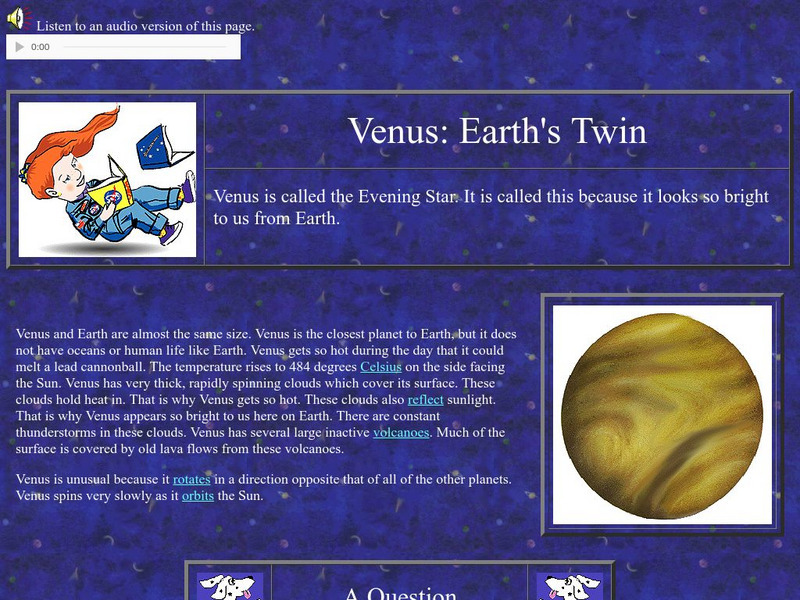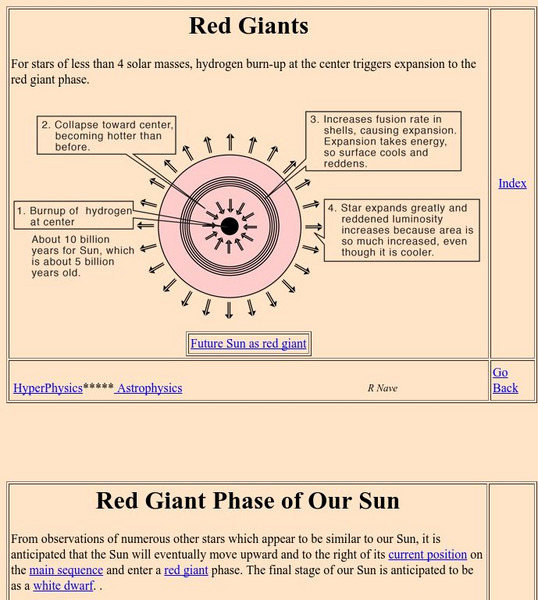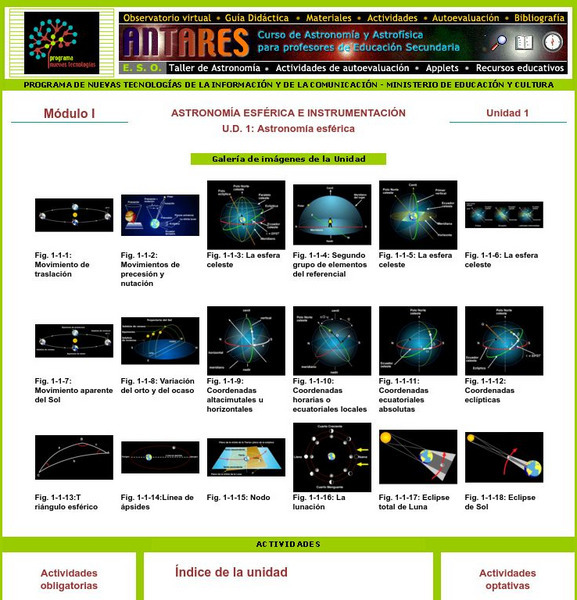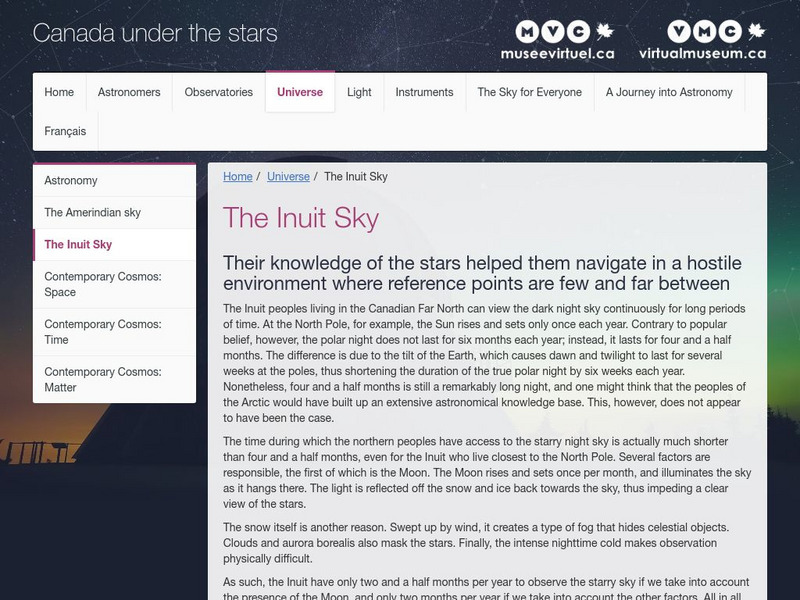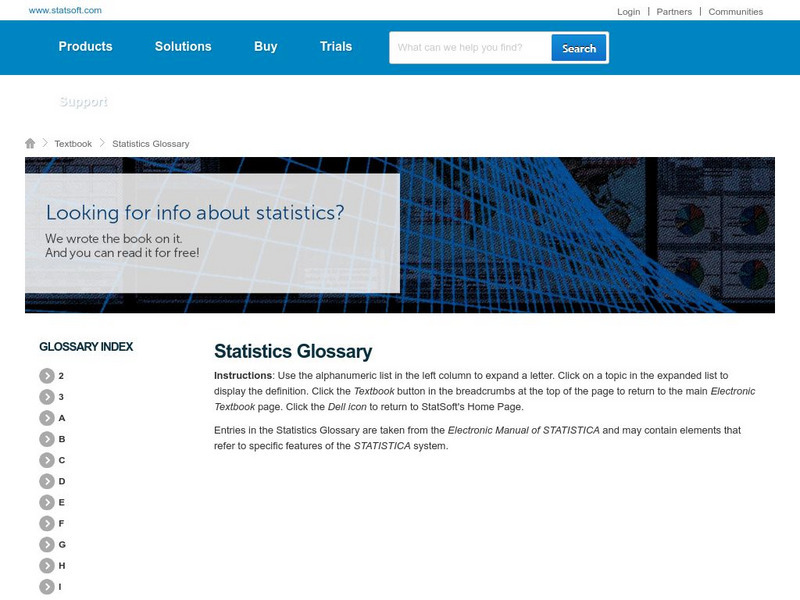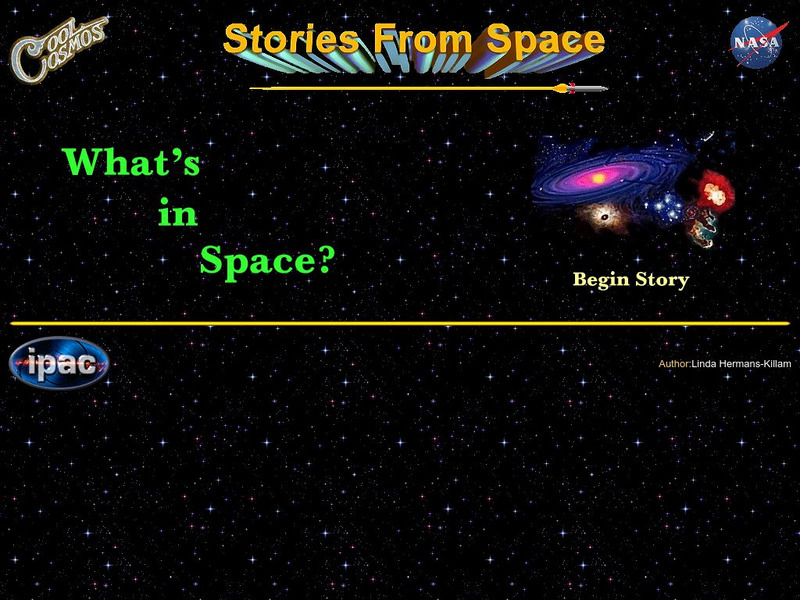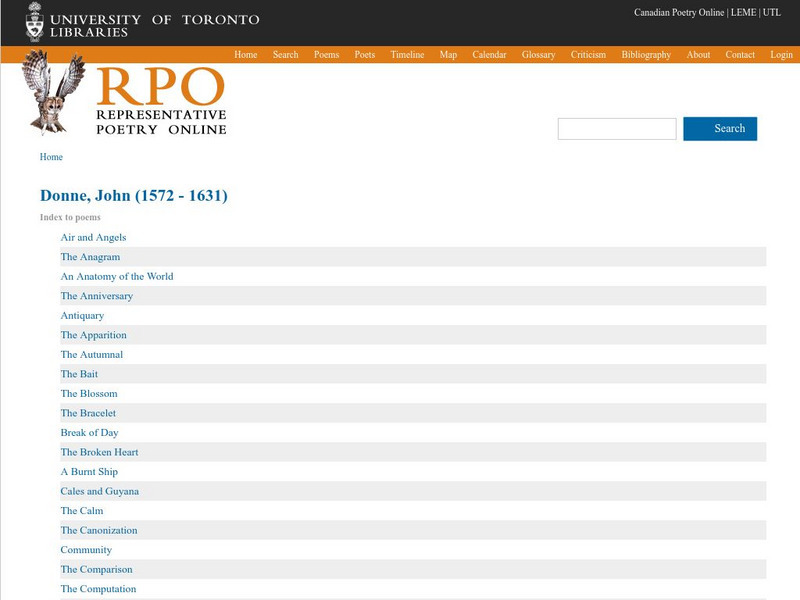Hi, what do you want to do?
Ministerio de Educación (Spain)
Ntic: Astronomia Visible
In this site you can learn about stars, planets, satellites and a little history of Astronomy.
NASA
Nasa Star Child: The Planet Venus
Basic facts about the planet Venus including its temperature, its atmosphere, and its volcanoes. Includes a discussion question on temperature, with facts, and the answer. A linked page covers similar material in a "Level 2" version, and...
Other
Yohkoh Public Outreach Project: Yohkoh Movie Theater
The Yohkoh Public Outreach Project provides images, movies, and tours depicting our nearest star, the Sun. Content includes a wealth of information, learning activities, and much more.
Georgia State University
Georgia State University: Hyper Physics: Red Giants
Describes the red giant star's development stages and the scenario of our sun as a red giant. Diagrams are used to present the information.
Other
National Research Foundation: How Far? How Big? How Many?
Using light as our measuring stick in space, science site provides all types of fun facts using light years and seconds as a reference.
Varsity Tutors
Varsity Tutors: Web English Teacher: Jack London
Lesson plans, e-notes, activities, and other resources are provided for teaching students reading Jack London's The Call of the Wild and his other works.
University of Texas at Austin
The University of Texas Mc Donald Observatory: Venus
Discover interesting facts about Venus, the hottest planet and the second planet from the Sun.
Ministerio de Educación (Spain)
Ministerio De Educacion: Atronomia Esferica Modulo I Unidad 1
Recognize the major constellations and learn about the sky during the different seasons of the year. You will also be able to measure the height of the mountains of the moon.
Other
Vmc: The Inuits the Sky of the First Inhabitants
The Inuit's knowledge of the stars helped them navigate in a hostile environment. In their legends, they did view the the Sun as being a woman, and the Moon as a man. Several stories are shared here.
Other
Stat Soft: Statistics Glossary
Dozens of statistical terms are defined and illustrated in this glossary.
Other
Christopher Crockett: The Astronomy Word of the Week Is "Barycenter"
While astronomers and philosophers have long mused on the possibility of other solar systems, the first planets confirmed to orbit a star other than our Sun weren't found until 1992. The reason it took so long is that it's really hard!...
Enchanted Learning
Enchanted Learning: Zoom Astronomy
Where is our Solar System? How far away is the sun? What makes up the sun? Find out all you want to know about our solar system. This is a comprehensive on-line site about space and astronomy. Check out all of the excitement!
California Institute of Technology
Cal Tech: Stories From Space: What's in Space?
Through this story you will be introduced to outer space: stars, the Milky Way, planets, the Solar System, the Sun, clouds of dust and gas, galaxies.
California Institute of Technology
Spitzer Science Center: All Pillars Point to Eta
This image, titled "All Pillars Point to Eta" features Eta Carinae, which is part of the Carina Nebula and is over 100 times more massive than the sun. The text under the image details various specifics about the picture.
Other
Roger Ebert: Review of Anna Karenina
Roger Ebert, film critic for the Chicago Sun-Times, reviews the 1997 film version of Leo Tolstoy's classic novel Anna Karenina. The movie starred Sophie Marceau and Sean Bean as Anna and Vronsky.
Curated OER
Exploratorium: Your Weight on Other Worlds
Want to lose weight in a hurry? Just step on a scale on almost any other planet! This page allows you to enter your weight on Earth and it will calculate your weight on all of the other planets, some moons and even some stars. Requires a...
University of Toronto (Canada)
Selected Poems of John Donne
Links to 42 poems by the English metaphysical John Donne (1572-1631).
Encyclopedia of Earth
Encyclopedia of Earth: Solar Radiation
Almost all of the energy that drives the various systems (climate systems, ecosystems, hydrologic systems, etc.) found on the Earth originates from the sun. Solar energy is created at the core of the sun when hydrogen atoms are fused...
Other
History of Rock 'N' Roll: Roy Orbison
Biographical summary of the life of Roy Orbison, a legend in popular music in the 1960s.
Other
The Astrolabe: Home Page
This site provides a very general overview of astrolabe principles with links to other pages for more detailed information.
Curated OER
Eternal Egypt: Stela of Ankhnesneferebre
The stela, an upright stone with a sculpted surface, of the Lady Ankhnesneferebre is an ordinary stela with a semicircular top decorated with stars and the winged sun disk.
Curated OER
Yohkoh Public Outreach Project: Yohkoh Movie Theater
The Yohkoh Public Outreach Project provides images, movies, and tours depicting our nearest star, the Sun. Content includes a wealth of information, learning activities, and much more.
Other popular searches
- Sun and Stars Diagram
- The Sun and Stars
- Moon, Sun and Stars
- Sun and Stars Powerpoint
- Moon Sun and Stars
- Sun and Stars Webquest
- Sun and Stars Web Quest
- Stars and Sun
- Sun Moon and Stars Activity






